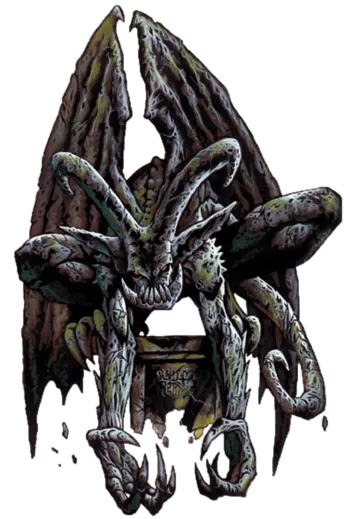World-Building: The False Light
Elfland’s Ethics & World Building | World-Building: Causes & Consequences | World-Building: Geneses | World-Building: About Alignment
A couple of posts ago, I wrote about multiple creation stories explaining the existence of B/X D&D player character races. The geneses of dwarves, elves, and humans are all incorrect. The creator-deities worshiped by those races are not deities; they are creatures, albeit very powerful creatures known as Werdaz. The only true deity is Iesmi, knowledge of whom has been preserved by the halflings against the machinations of Deorcynsse, the first of the Werdaz, who disguised himself as Valsch Witan in order to seduce many away from the Way of Iesmi.
Iesmi created the Werdaz and appointed to them the task of regulating creation. The Werdaz were created as immaterial creatures. They are what medieval scholastics called intellectual beings, existing without any material form at all. I write about intellectual beings in this post from April 2012.
The First Lie
Deorcynnse, the first of the Werdaz, resented that Iesmi had created the halflings. He hated their weakness, and he coveted their favored status. That Iesmi permitted the Werdaz to partner with him to create other races did not quell Deorcynnse’s pride and envy.
Disguised as Valsch Witan, Deorcynnse convinced many Werdaz that they lacked necessary experiential knowledge. To better see Iesmi’s injustice in favoring the halflings over the other races, it was necessary to experience life encumbered by material form. Only by experiencing the limitations of Iesmi’s material creatures would the Werdaz be able to fully empathize with the travails of mortality.
Those Werdaz who accepted Valsch Witan’s words then took on material form and substance, believing that the limitations in activity and knowledge they would experience as material creatures would make them more compassionate. Thus Valsch Witan ensared innumerable Werdaz, locking them into a mode of existence by which it became all the easier to manipulate them.
The Second Lie
Those Werdaz who surrendered their immaterial nature found themselves locked in material substance. Their new bodies, although powerful, lacked an intellectual being’s apprehension of knowledge unmediated over time through physical senses. As a result, these fallen Werdaz became subject to further errors. They realized they had lost direct, immediate knowledge of Iesmi, and they despaired.
Valsch Witan comforted them with another lie. He told them to let conscience be their guide. As long as each Werdaz acted in accordance with conscience, nothing could be wrong. The Werdaz, still unfamiliar with the errors of judgment that material beings are subject to, took Valsch Witan’s words to heart. These Werdaz then took this new commandment to the races that they had formed (but to which Iesmi had given life). Each Werdaz, dedicated to their own race’s advancement, taught conscience-guided doctrines to the masses via their clerics.
And the errors multiplied. Every creature sought to follow its own conscience, often too uncritical of their misperceptions and misjudgments. Conflicts increased. Sophistry grew regnant. Elves had elvish truth, dwarves had dwarven truth, et cetera. That the multiplicity of truths contradicted each other was not seen as defect of judgment. Instead, each came to see the contradictions as proof of strength misused. So, for example, if elves insisted on pressing the claims of their truth over dwarven interests, then the dwarves would answer with force.
The Third Lie
The “doctrine of conscience” led to the widespread belief that contradictory propositions can be simultaneously true. Having destroyed the intellectual and moral order of so many of Iesmi’s creatures, Valsch Witan’s next target was the physical order. Magic, a force regulated by several Werdaz, many of whom fell into Deorcynnse’s clutches, became the means by which creatures need not be bound by the accidents of their birth. An individual could use magic to reorient their body to fit the form conscience deems best. Rulers could likewise make the same sorts of decisions about their subjects and, most especially, their enemies.
Among the first results of the Third Lie were the Gargoyles. Deorcynnse himself formed them deep in the earth, binding to them elemental spirits, lesser immaterial creatures responsible for the form and substance of the material world. Then came the Gargarizein, when the Gargoyles burst from the world-under, bringing an age of destruction to the Western Lands. The resulting Dark Age further fragmented societies, giving a firmer hold to Deorcynnse’s machinations over the hearts and minds of both fallen Werdaz and mortal creatures alike.



Leave a Reply